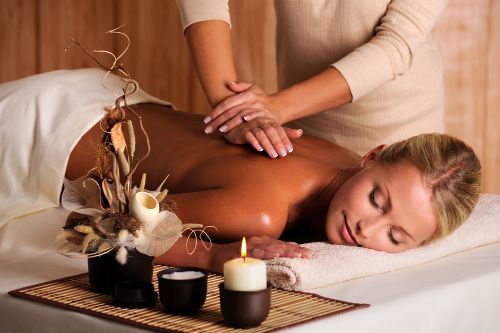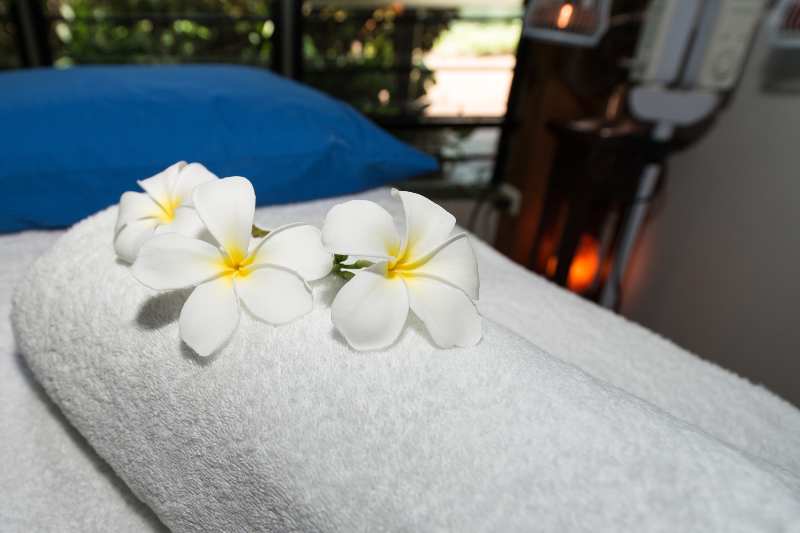
Ultimate Guide To Starting a Successful Massage Business
Whether you are an experienced massage therapist or an entrepreneur looking to start a business in the wellness niche, starting a massage business can be an exciting opportunity to pursue.
According to the American Massage Therapy Association, or AMTA, the massage industry is a whopping $ 18 billion industry that is still growing. While it’s true that the industry has been heavily affected by the COVID-19 pandemic, it has shown signs of rapidly bouncing back.
However, while starting a massage therapy business is definitely lucrative, it doesn’t mean you’ll automatically get customers and grow a successful business. You still need to plan the business properly while considering all the different factors: your business name (brand), whether it’s going to be a mobile massage service or a physical parlor, the design of the therapy room, and more.
With that being said, in this ultimate guide to starting a successful massage business, we’ll discuss all you need to know to set up every element of your massage business.
By the end of this guide, you’d have learned about:
- Legal requirements of starting a massage business
- How to choose the perfect location
- Mobile massage business VS setting up a massage parlor VS home-based massage business
- Designing your massage therapy rooms
- Equipment and supplies you’ll need
- How to market your massage business
- How to retain your clients
And more.
Without further ado, let us begin right away.
Different Types of Massage Businesses
The concept of a massage business is fairly simple: offering therapeutic massage services to customers for a fee.
However, we can actually offer a massage business in at least three different ways:
1. Setting Up a Massage Clinic
Fairly self-explanatory, in this type of business, we either rent or purchase a physical location to set up the massage clinic.
This is technically the most expensive option due to the cost of getting a property. However, it is also the most versatile with the highest scalability potential. With a large enough physical location, for example, you can employ more massage therapists and serve more clients to grow your business.
Also worth considering is that you can combine the massage business with other types of businesses. For example, you can partner up with a local gym or spa center and rent out one of their rooms to start your massage clinic.
2. Home-based business
If you are an experienced massage therapist, especially if you already have a loyal clientele, a viable option is to start your massage business as a home-based business so you can provide your services from your home.
All you need is a large enough room that you can set up as your clinic, as well as some basic equipment (more on this later).
3. Mobile massage business
With how busy people are today, various mobile health and wellness services are now very popular all over the world.
With this type of massage business, you’ll need to invest in a vehicle large enough to store your equipment (which is typically not that big), and typically there are fewer overheads involved when compared to setting up a physical location.
Setting Up a Massage Clinic: Choosing The Right Location
If you plan to set up a physical location (stationary massage business), then one of the keys to success is the location.
When weighing between different locations, it’s crucial to first perform market research and competitive analysis to assess two main factors:
- Whether there is enough demand for massage services in the chosen area
- Whether the competition in the area is manageable
Perform thorough market research to understand factors like demographics data, any health and therapy services in the area, economic factors, and so on. You might also want to contact the local trade council or other relevant organizations in the area to gain more information.

As discussed before, you may also want to consider the option of partnering up with other businesses in your area so you can start your massage business as a complimentary service. Gyms, hairdressers, and spa centers are great candidates, and they often rent out a room within their business premises for this purpose.
Education and Certification Requirements
Most states in the U.S. would require you to be a certified massage therapist with state registration, state licensure, or state certification. Alternatively, you can hire a licensed massage therapist or partner up with one. Different cities or local governments might also have different requirements, so make sure to check with your local trade associations or similar organizations.
To be certified, most states require a specific number of hours of in-class massage therapy training which must include the study of physiology and anatomy. The actual number varies by state, between 500 to 1,000 hours of education. Make sure to get education from a recognized school or program that is accredited by a credible agency.
Board Certification and Association Membership
Not mandatory, but massage therapists might also want to become board certified, administered by the National Certification Board for Therapeutic Massage and Bodywork (NCBTMB). While this is not a legal requirement, getting board certified would allow the therapist to use the designation BCTMB, short for Board Certified in Therapeutic Massage and Bodywork, which can be a huge selling point in attracting potential clients.
Another consideration is to gain membership in a credible professional massage therapy association. If you are located in the US, then you should consider joining the American Massage Therapy Association (AMTA) membership. Typically you’d need to meet the minimum education requirements before you can join these associations, among other requirements.
Insurance Requirements
Again, the legal requirements for insurance would vary depending on your location. However, even if you are not legally required to be insured in your area, we’d highly recommend you to get at least basic insurance policies relevant for a massage therapy business.

You should at least consider getting a public liability insurance policy. Accidents do happen in massage therapy services, so don’t assume you are above the need for insurance even if you don’t perform manipulation. Insurance would protect yourself and your business when there is any injury as a result of your massage therapy service so you don’t have to pay for medical and legal repercussions out of your own pocket.
Health Insurance Eligibility
When providing your services, you’ll probably come across clients looking to reimburse you for your services using their health insurance plans.
In such events, it’s crucial to check whether their health insurance covers therapeutic massages. Some insurance plans might only cover massages performed by licensed therapists (this is also another important consideration of why getting licensed/certified is important).
You can then simply fill out a health insurance claim form to receive payment from the said insurance company. Typically the process would be relatively simple.
Registering Your Business Name
Branding is obviously a very important part of starting any successful business.
First, decide on an appropriate name for your massage business. Think carefully about how you’d like your clientele to perceive your business, and choose a name that can reflect this. You should have fun in this process and create a list of potential names before deciding on one. However, make sure the brand name is unique, easy to pronounce, and easy to remember.
A good approach is to look at your competitors’ names for inspiration. Also, keep the name short so you can use it in your website’s domain name later on.
Another important consideration is that if you’ll operate the business as a sole proprietorship, you can use your own name, but we’d recommend registering your business with another name then use a DBA process to run the business with your name (that is different from the business’s registered name).
Once you’ve got a shortlist, verify whether the business name is available by checking:
- Federal and state trademark records
- Your state’s business records
- Social media platforms for businesses with similar names
- Web domain availability (secure your domain name ASAP as you’re registering the business name)
Forming a Legal Entity for Your Massage Business
In the US, there are various business structure types you can opt for, but the most common are sole proprietorship, LLC (Limited Liability Company), Partnership, and Corporation.
Even if you are running the business by yourself, we’d recommend establishing your massage business as an LLC or corporation. Doing so will help protect yourself in the event of legal disputes so you are not personally liable.

Don’t forget to also register for applicable state and federal taxes before opening your business.
Setting Up Business Accounting
Don’t forget the back-office aspect of the massage business.
Yes, it’s boring, but properly recording your accounting is very important so that you can understand how your business performs financially. Also, keeping accurate records would simplify your annual tax process and protect you from various legal issues.
It’s also important to open a dedicated business banking and credit account to protect your individual assets in the event of legal disputes.
Establishing An Online Presence
In this day and age where virtually all our potential clients are online and active on social media platforms, it’s very important for your massage business to have a strong online presence.
We should focus our efforts of establishing an online presence in four key areas:
- A professional-looking and functional website
- Social media presence
- Reliable online reservation function, preferably one integrated between your website and social profiles
- Google Maps/Local SEO presence
Let’s discuss them one by one.
1. Your massage business website
It’s very important to have a professional-looking website that is also functional and easy to navigate.
Nowadays, setting up a WordPress-based website is fairly easy (and free), and there are also services like Wix or Squarespace that allow you to easily build a well-designed website with a drag-and-drop visual builder.
So, there’s simply no excuse not to have a proper website. Even if you have a pretty strong social media presence with a prominent number of followers, your social media profiles are not adequate replacements for your website.
The website should be easy to navigate and provide all the information your potential clients might need: what types of massage services (and others) you offer, pricing information, your location, names of registered therapists (if necessary), and more.
A professional-looking website will help convey to your clients that you are a respectable, professional, and trustworthy massage parlor. Remember that they will only visit your service if they think they can trust you.
Another important factor to consider is to enable an online reservation function on your website, which we will discuss further below.
2. Social media presence
This one is pretty self-explanatory: establish your massage business’s presence on relevant social media networks.
Instagram and Facebook are obvious choices, but you can also leverage other platforms like Twitter and LinkedIn to reach out to more potential clients.

When establishing your social media presence, you should consider that you have three different options:
- Organic: building your own followers by regularly publishing your content (i.e. interesting posts about your massage therapy)
- Paid: using paid options offered by the social media networks (i.e. Facebook Ads).
- Influencer: partnering with relevant influencers that might help in promoting your massage business
It’s crucial to find the right balance between the three: organic efforts are the most affordable and can be totally free, but will take a long time before you’ll get significant results. On the other hand, paid options can guarantee quick results, but they’ll be expensive. Influencer marketing is somewhere in the middle.
Leverage the three options above to build a strong social media presence for your massage business.
3. Online reservation
Today’s consumers expect online reservations. Period.
It’s very important to invest in reliable online appointment scheduling software that integrates with platforms like Wix or even the free WordPress where you can implement a WordPress scheduling plugin so you can make sure it’s as easy as possible for potential clients to book your service.
With a professional massage therapy scheduling software, you can offer 24/7 reservations. Consider the fact that more and more people are now booking their appointments outside business hours, and phone-based appointment bookings are simply no longer effective.

This way, you can simply direct people to your website from your social media profiles and Google Maps listing (more on this later), and they can easily book your massage service on your website with an online booking system.
4. Google Maps SEO
There are two primary ways people learn about local businesses these days: from social media and from Google searches for queries like “restaurants near me”, including “massage parlors near me” or “massage in (city name)”.
The thing is, for these queries, Google pulls up results from Google Maps, so we’d like to rank as high as possible on Google Maps to make our massage business available for as many searchers as possible.
To do this, we should implement Google Maps SEO or Local SEO, and while it might seem daunting at first, we can actually do this in just four key steps:
- Claiming and verifying Google Maps/Google My Business listing
- Optimizing your Google My Business Listing, focus on providing accurate and complete information for your users.
- Building local citations by listing your massage business on relevant online directories
- Getting more reviews from existing clients, especially on Google Maps but also on relevant review sites/platforms
By doing these four steps consistently, you’ll see your massage business listing slowly but surely climbs the Google Maps ranking.
Designing Your Massage Therapy Room
If you plan to set up your own clinic or set up a massage room at home (for a home-based business), this step is very important.
You’d want a comfortable, big enough, and attractive room to appeal to your client. How good your massage room is will significantly affect your client’s experience and can be the deciding factor in retaining your clients.
While designing your massage therapy room can be a deep subject on its own, here are some tips you can use:
How much space would you need?
A standard massage table is around 27-30 inches in width and 78-80 inches in length. So, first things first, your massage room should be large enough to comfortably accommodate the table.
In general, you should have at least 3 feet around the table to comfortably move around and work in the room (and to accommodate claustrophobic clients).

Also, you’ll need adequate space for storage and screening/changing area, if you’re not planning to have a separate changing room. You’ll need a dedicated area for a counter and a sink, and a seating area (very important).
Even if you typically won’t have a long waiting time between clients, seating for your clients is still very important because they’ll need to sit down while removing their shoes. Also, consider your own chair or stool that you might use during the massage session.
In general, we’d recommend an area that is at least 45 sq ft in or more.
Flooring
It’s typically best to go with softer flooring surfaces like wood or vinyl. If you have hard flooring in place, then you can use carpets or rugs to soften the surface. Softer flooring can help in improving the client’s comfort.
Decoration tips
- The massage table should be positioned at the center of the room, and we’d recommend placing the head of the massage table as far away from the entrance of the room. This will help create a feeling of safety and security for your clients.
- Don’t underestimate the importance of lighting. Dimming the lights can help clients relax and create a tranquil ambiance. In general, using warm-colored light instead of cool white lighting is recommended.
- Make sure you can control the lighting of the room, for example, having blinds to block out natural sunlight, and consider installing dimmers and adjustable lamps.
- Incorporate scenes of nature (i.e. with painting or photos) to help the client relax.
- You can also incorporate medical-themed pictures like human anatomy charts to emphasize the room’s function.
- Make sure the room is quiet enough. Soundproof the room if necessary. Install decent-quality speakers and play relaxing music to enhance your client’s experience. You can also play relaxing nature sounds (rain, moving waters), or alternatively, you can install a desktop fountain in the room to create this experience.
- Large mirrors can make the room feel much larger than it is. Consider installing wall-to-wall mirrors. Also, mirrors can allow clients to check their appearance after a massage before they leave, so at least install a small mirror near the entrance of the room.
Additional Marketing Tips
Just because you’ve got a great massage room and online presence, doesn’t mean you’ll get clients right away.

You still need to carefully plan your marketing strategy, and here are some tips:
- Competitive advantage is key: what is it that you offer but your competitors can’t? Unique massage technique? Great massage room? Cheapest price?
- Leverage content marketing and social media marketing by positioning yourself as an expert. For example, offering tips related to massage and health in general.
- Offer introductory discounts and freebies in your marketing efforts. Still effective when done right.
- Give existing clients a discount if they introduce a new client to you (referral), or you may also offer group discounts when they bring people with them.
- Partner with other businesses in your area for cross-promotion opportunities. For example, you can work together with a nearby manicure/pedicure center for cross-promotion discounts
- Leverage email marketing and/or text marketing. For example, send an email if a client hasn’t made an appointment in more than two months. You can also offer special discounts on their next session.
Conclusion
While starting your own massage business can be challenging, it’s definitely going to be worth it in the long run. Embrace the exciting time of planning your massage business’s name, setting up your room and online presence, and attracting those first few clients.
We hope this guide has helped in answering the questions you may have on the topic of starting a successful massage business. By following the tips we’ve shared above, you can start planning, setting up, and running your own successful massage business as soon as possible.


